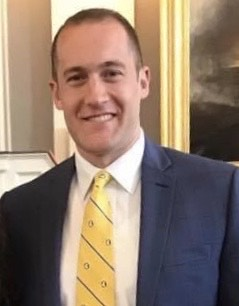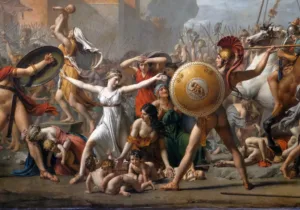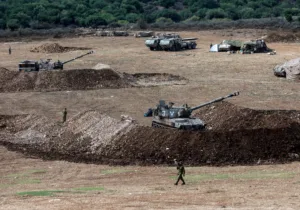Today, June 15, marks the 108th anniversary of the Syriac Genocide. Often referred to as “Sayfo” (Syriac for “the sword”), the Syriac Genocide is considered among the darkest episodes of the twentieth century—a grim demonstration of man’s worst proclivities, driven by destructive ideology, which resulted in the slaughter of 750,000 defenseless Syriac Christians from 1915 to 1923.
Sayfo indeed remains a defining element of Syriac collective historical memory. However, historically speaking, it represents just one episode in the long arc of Syriac Christian persecution. Even the century following Sayfo was characterized by a series of triumphs and tragedies for the Christians of the Levant and Mesopotamia, Christians who have been denied human rights, freedom of faith and conscience, and the opportunity to participate in the political process. When spared from the sword, they are treated as subjects, or dhimmi, in their indigenous homes.
In recent years, however, Syriac Christians—the descendants of Sayfo survivors—living in a small corner of northeast Syria have secured their place in all levels of governance and public service, and even played an active and pivotal role in defeating the Islamic State. How the Syriacs arrived at this point, however, was not a straight and unimpeded path. This progress was hard-earned through the blood of a dwindling community.
Following their post-genocide exodus from what would later become Turkey, the Syriacs’ surviving ancestors did not assume the role or mindset of hapless refugees. Following WWI, during the French Mandate in Syria in the first half of the twentieth century, these genocide survivors established and built the unassuming metropolitan centers of northeast Syria, including Qamishli and Hassakah. They developed Syria’s agricultural industry, the largest sector of the Syrian economy, driving its gross domestic product throughout the twentieth century. Syriac Christians turned the Syrian desert, previously inhabited only by nomadic tribes, into the breadbasket, upon which Syria depends even today.
During this period, Syriac Christians also sparked a cultural, linguistic and intellectual renaissance following centuries of repression. The Syriac language, a dialect of Aramaic, the lingua franca of the ancient Near East, and the native tongue of Jesus, was culturally and intellectually revived. This renaissance was accomplished through the establishment of academic institutions of higher learning and a flourishing of the arts in the permissive landscape of mandatory French rule.
With the end of the French mandate in 1946, and the subsequent takeover by Arab nationalist regimes, the Syriacs were once again treated as protected subjects, denied cultural and national rights. This trend intensified in the 1950s and 60s during the advance of Egyptian president Gamal Abdel Nasser’s Pan-Arabist pipedream project to unify Egypt and the Levantine states under the United Arab Republic. Beginning in this period, Syriac private schools were either nationalized or closed, heavy restrictions were placed on the use and instruction of the Syriac language, and the Syriac-run agricultural industry was nationalized.
Successive Syrian Arab governments perpetually reminded the Syriacs that their ancestors were refugees in the benevolent Arab state, and that the authoritarian regime was their only salvation from perennial massacre. This weaponized pity became state policy, and intensified with the regime of Hafez al-Assad, who appointed Christians to nominal positions to demonstrate his tolerance—a classic manifestation of “Arab Christian” tokenism.
Arabist regimes have tacitly blackmailed Syriac Christians. Christians are reminded that, if they value their safety, the apex of their community’s aspirations shouldn’t exceed the bounds of their ghettoized neighborhoods, safe from massacre—an implicit threat that the Arab dictator would readily inflict upon them the same carnage visited upon their ancestors decades earlier.
Following the 2011 Syrian uprising, Syrian society descended into one of the bloodiest civil wars in modern history. Islamist groups came out of hiding, coalesced into what became the Islamic State, and visited carnage upon large swaths of Syria and Iraq. Thousands of Christians and other ethno-religious minorities were killed, taken as sex slaves, or kidnapped for ransom. This barbarity drove the mass westward migration of hundreds of thousands of Christians. Others sought refuge in cities controlled by the Syrian regime, including Damascus and Latakia, for their relative safety.
As the Syrian Civil War intensified, the Autonomous Administration of Northeast Syria (AANES) was forged through the cooperation of various ethno-religious communities, namely Syriacs, Kurds, and Arabs. In close partnership with the United States, this newly constructed coalition of freedom-minded communities (who built the Syrian Democratic Forces as its defense apparatus) led the fight against the Islamic State. The territorial defeat of ISIS by the international joint task force—Operation Inherent Resolve—can be credited in large part to the Syriac Military Council, the Christian branch of the Syrian Democratic Forces, which punched far above its weight.
In the last century, Syriac Christians beat the odds, survived multiple genocides, accomplished herculean feats in northeast Syria, and enriched Syrian society at large. Having resisted the Arabist-propagated, weaponized narrative of protected victimhood, Syriacs in northeast Syria continue to show promise as the hope for Christians and other minority communities in the greater Middle East, as a unique model for a vibrant and empowered Christian community.
Indeed, Syriac Christians benefit from the egalitarian principles that characterize the AANES project. Together with their Kurdish and Arab partners, they’ve built institutions for pluralist self-governance, and instituted the Syriac language as an official language in northeast Syria, enabling Syriac students, once again, to learn the Syriac language in school. The progress made in recent years in the AANES is monumental.
To preserve and build upon these historic achievements and secure the fate of Christians and other ethno-religious minorities in the Middle East, the U.S. must maintain and develop its partnership with this promising Christian community. Through continued American presence in northeast Syria and a sustained partnership with the Syriac Military Council, the United States will maintain critical, results-yielding engagement in Syria—a region previously inaccessible to the West. In so doing, the United States can readily support programs that enable Christians and other minorities to return to, and remain in, their native land. This can be augmented through support for Syriac academic institutions. Empowered by the United States, Syriacs will be better positioned to reinvest in the societies they built in the wake of the Sayfo Genocide a century ago, thereby supporting American interests in the greater region.
This success story of pluralism and self-governance unfolding in northeast Syria is organic and natively-generated—almost unheard of in this part of the world. The United States should not miss this rare opportunity to facilitate the full fruition of this unfolding success story. If this positive momentum is forsaken, the westward migration of the Middle East’s final Christians will continue to accelerate with regional extinction as the inevitable conclusion.







 Sponsor a student for Christianity & National Security 2024
Sponsor a student for Christianity & National Security 2024